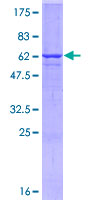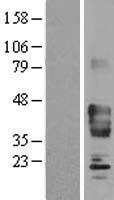order histories, retained contact details for faster checkout, review submissions, and special promotions.
Forgot password?
order histories, retained contact details for faster checkout, review submissions, and special promotions.
Location
Corporate Headquarters
Vector Laboratories, Inc.
6737 Mowry Ave
Newark, CA 94560
United States
Telephone Numbers
Customer Service: (800) 227-6666 / (650) 697-3600
Contact Us
Additional Contact Details
order histories, retained contact details for faster checkout, review submissions, and special promotions.
Forgot password?
order histories, retained contact details for faster checkout, review submissions, and special promotions.
SYP / Synaptophysin
synaptophysin
Synaptophysin (Syn1) is an abundant synaptic vesicle membrane protein that contains four transmembrane regions. It forms a high molecular weight complex in the vesicle membrane containing at least four Syn I subunits and an 18 kD protein termed synaptobrevin/VAMP. Syn I is phosphorylated by both serine/threonine and tyrosine kinases on its cytoplasmic tail. Knockout studies in mice have shown that it is not essential for neurotransmitter release.
| Gene Name: | synaptophysin |
| Synonyms: | SYP, MRX, Synaptophysin, MRXSYP |
| Target Sequences: | X06389 CAA29686.1 P08247 |
Publications (9)



If you do not find the reagent or information you require, please contact Customer.Support@LSBio.com to inquire about additional products in development.









